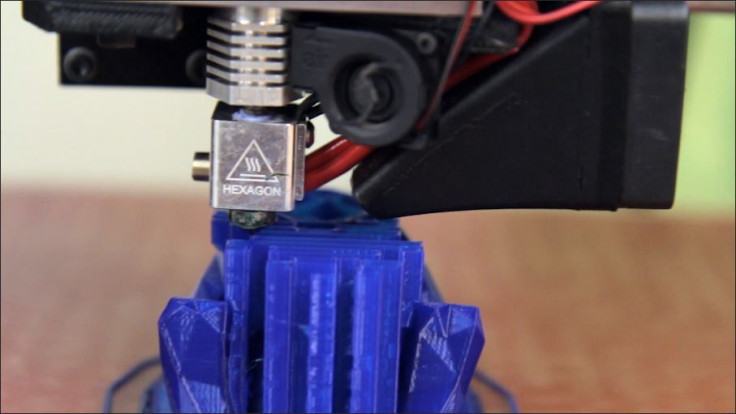3D Printers May Emit Styrene, A Pollutant From Plastics That Could Be Harmful To Health

In 2015, 3D printers did all sorts of amazing things for the field of medicine. They helped give a child a new skull, were used to manufacture an epilepsy drug, and gave a cancer patient a new rib cage. Medical Daily even visited a university that allows students to use 3D printers to develop these types of innovative products while they are working toward their degrees. As amazing as these devices are, a new study reveals some of the plastics used to print products can be potentially hazardous to your health.
Published in Environmental Science & Technology, the study looked at a variety of different 3D printers available to buy right now to find if the materials emitted during the printing process could be harmful. They did this by testing the air before, during, and after 3D printing a product.
Many commercially available 3D printers use a process called fused filament fabrication (FFF) to create the products. FFF involves superheating a material, passing the material through a nozzle, and onto a bed which can move on the X, Y, and Z axis. The superheated material is laid down layer by layer, cooling and hardening into a 3D shape. The materials used in this process generally range from different polymers like acrylonitrile butadiene styrene (ABS) and polylactic acid (PLA) to metals like steel or aluminum, ceramics, and more.
During the printing process, these materials emit gases and particles which have been found to be harmful to animals. To test this, the researchers gathered five of the most popular, commercial 3D printers and used various materials including ABS, PLA, nylon, high-impact polystyrene, and high-density polyethylene to print within an enclosed environment. They used the same sample each time they printed and repeated the test with each filament and printer combination.
The researchers found ABS in particular was emitting styrene levels much higher than those recommended by California's Office of Environmental Health Hazard Assessment (OEHHA). Styrene is a carcinogen found in many of our plastics like food containers, or in packaging materials that come with your new computer. In both enclosed and open testing, ABS ranked higher than all the other filaments used.
On the lower end of the spectrum, PLA showed the least emissions, and most of its emissions were in the form of the non-hazardous chemical lactide. The researchers also found that no specific brand of printer upped emissions, so no particular printer offered any safety advantage.
Though this study might make 3D printers seem hazardous to your health, these tests were done in enclosed environments with the printers running for hours at a time. For those who will be printing for hours on end, consider opening a window, or enclosing your printer in a leak-proof box and ventilating it properly to the outside of the building. This way, you can avoid the chemicals in the air and still enjoy your brand-new, 3D-printed toothbrush.
Source: Stephens B, et al. Emissions of Ultrafine Particles and Volatile Organic Compounds from Commercially Available Desktop Three-Dimensional Printers with Multiple Filaments. Environmental Science & Technology . 2016.
Published by Medicaldaily.com



























